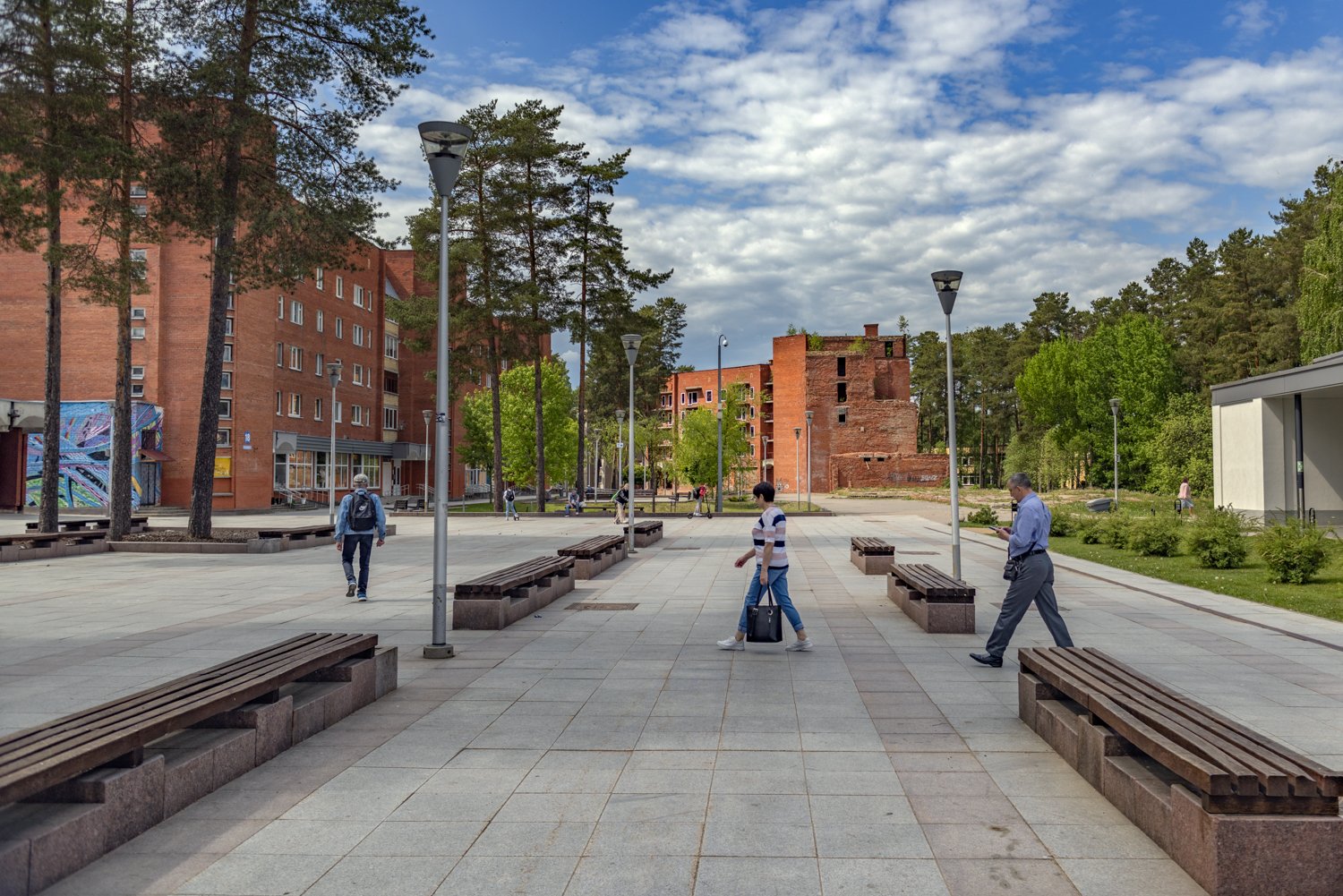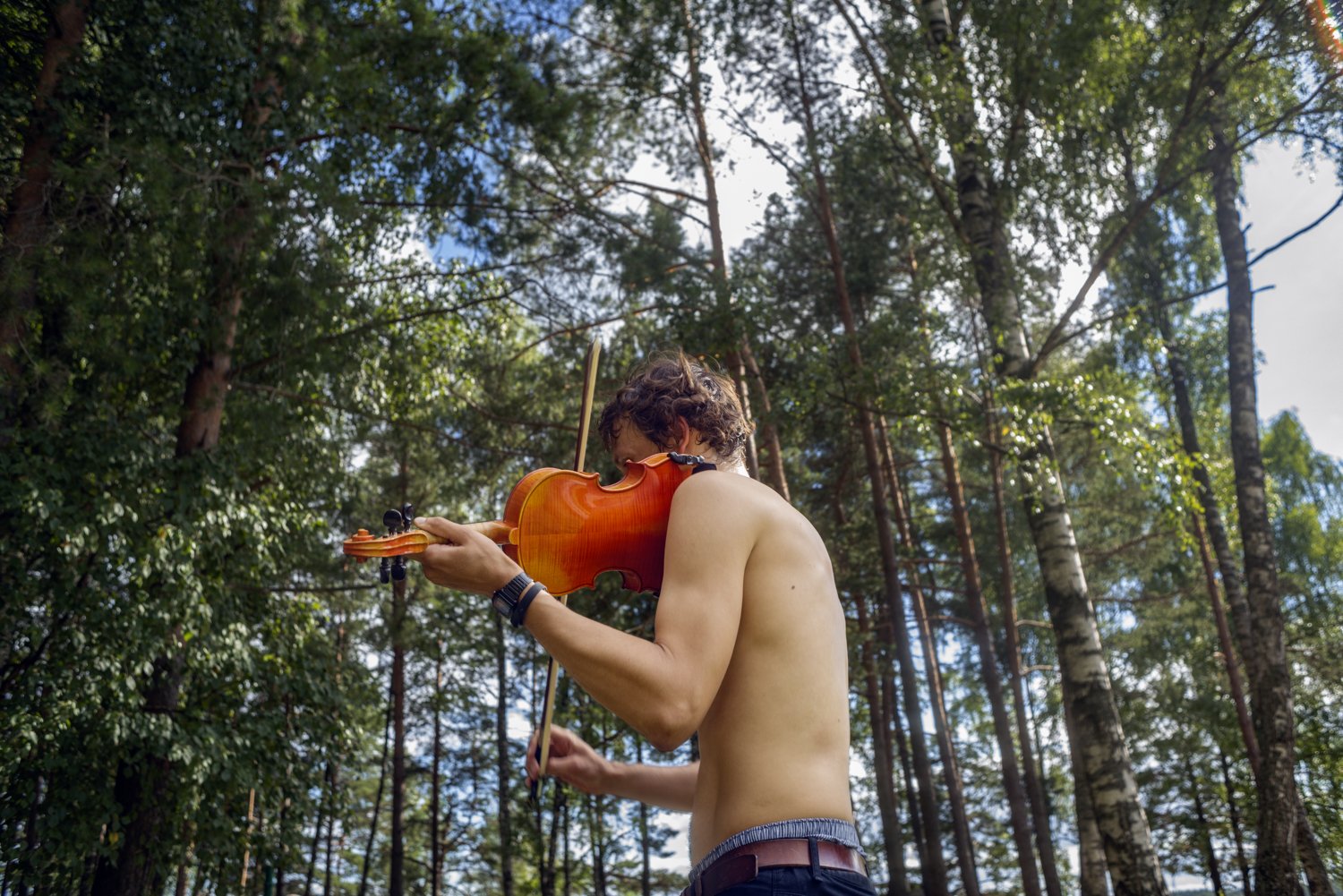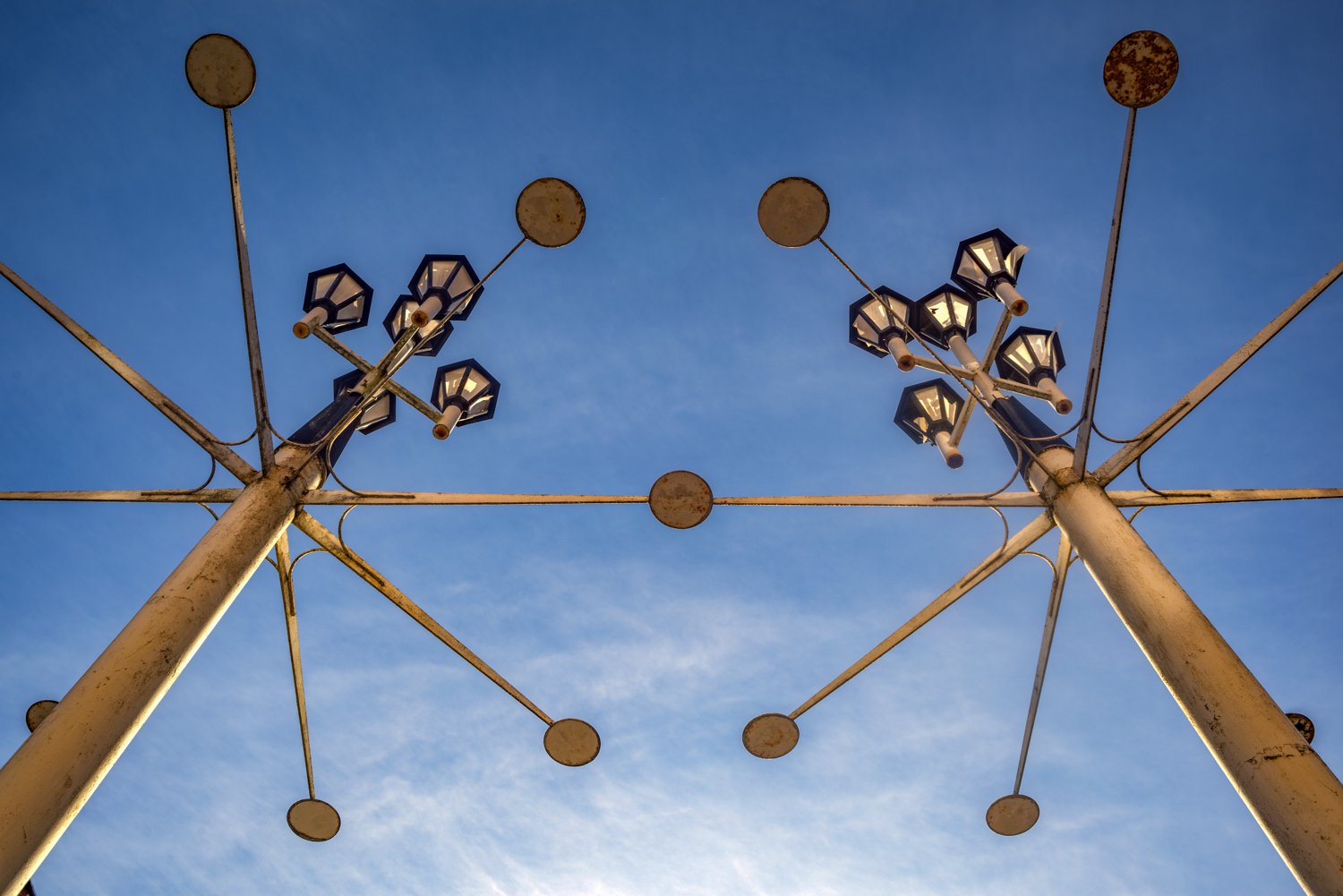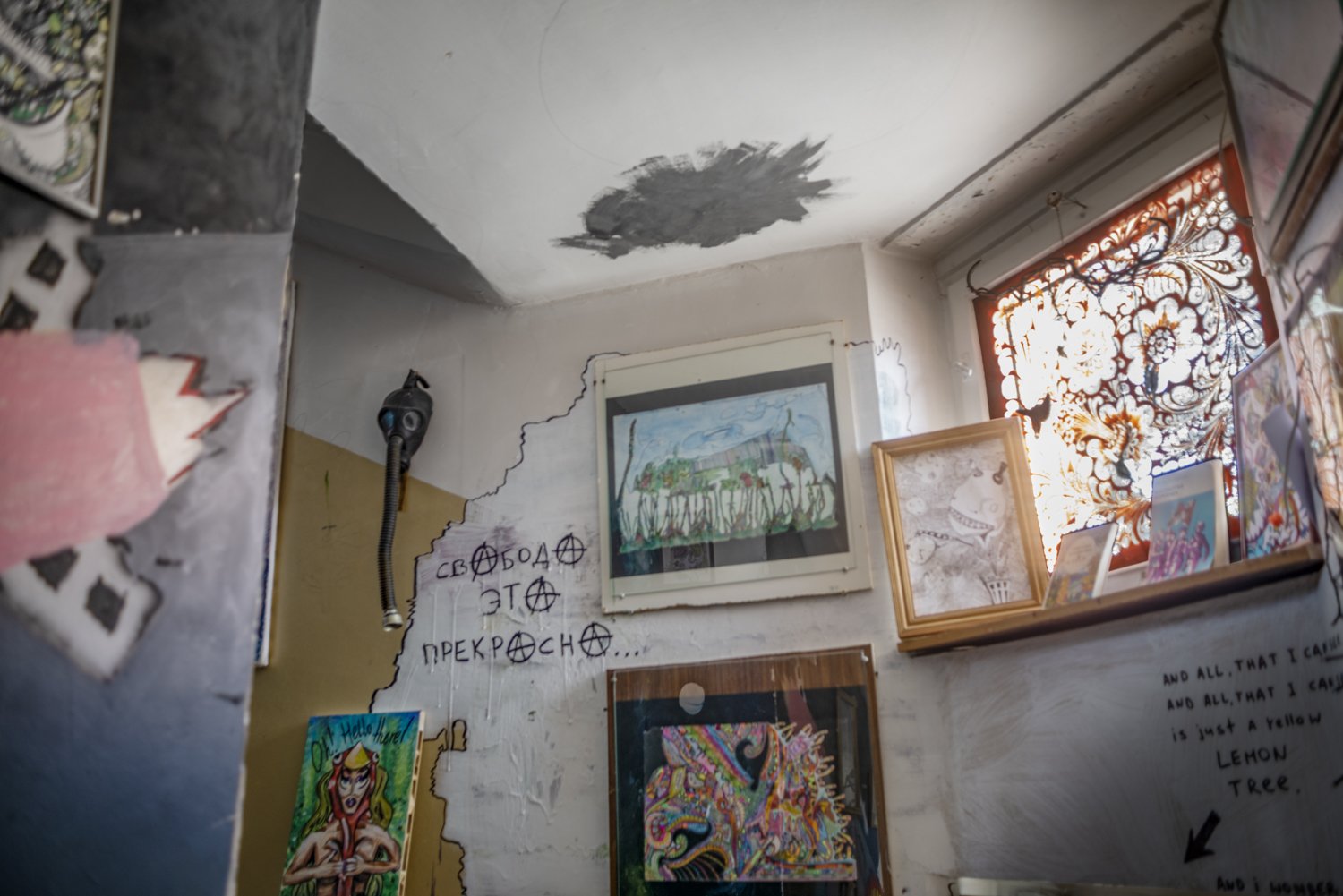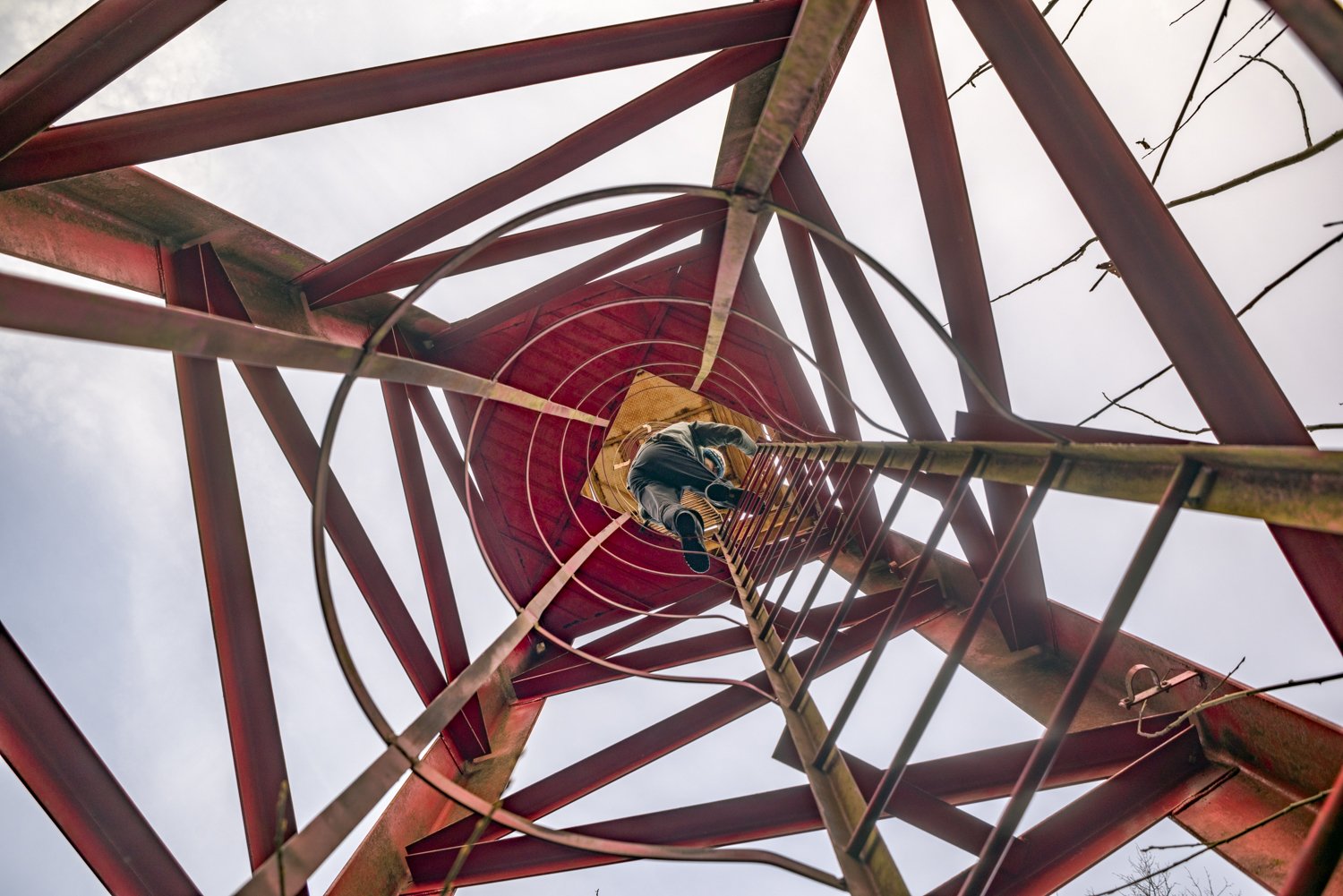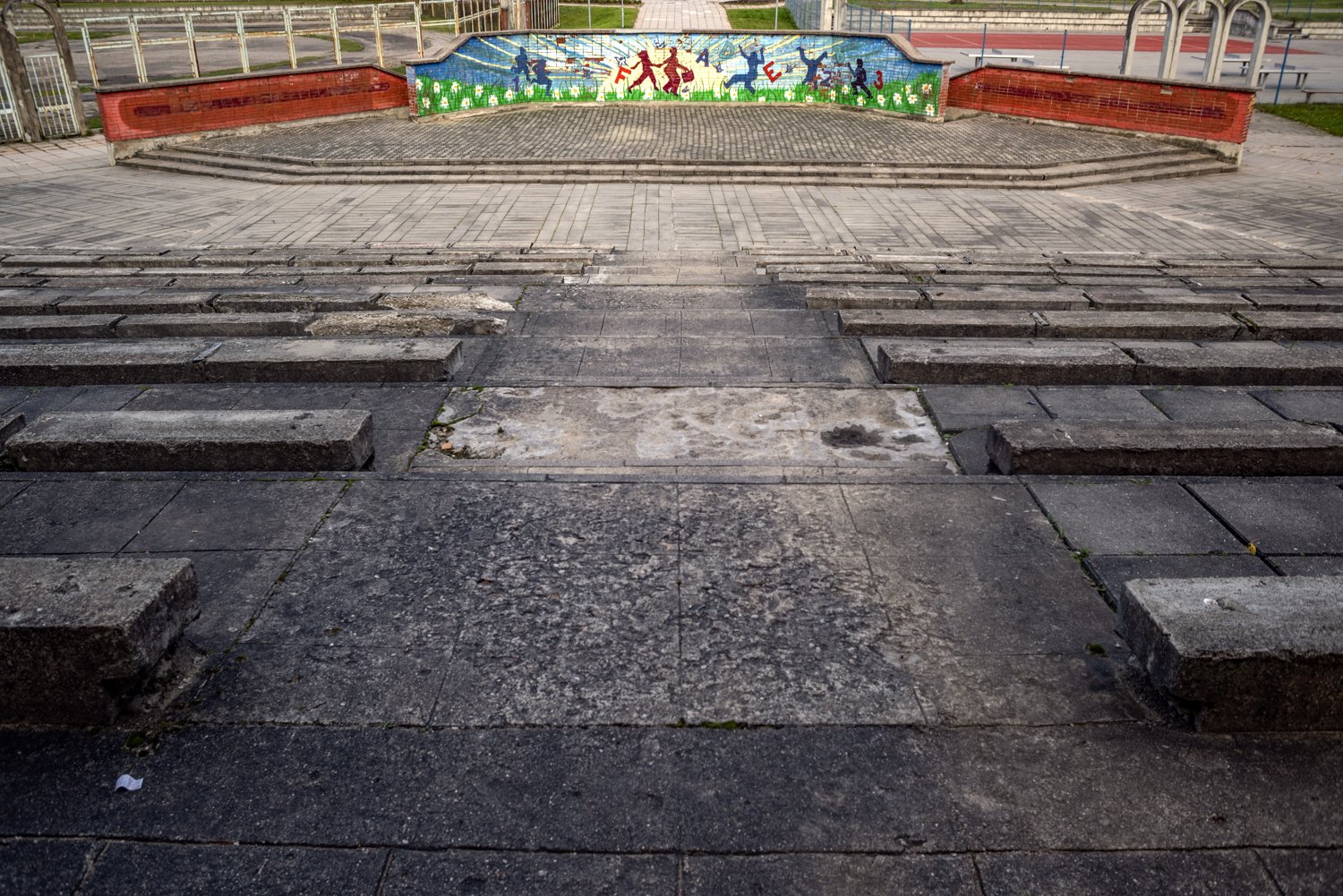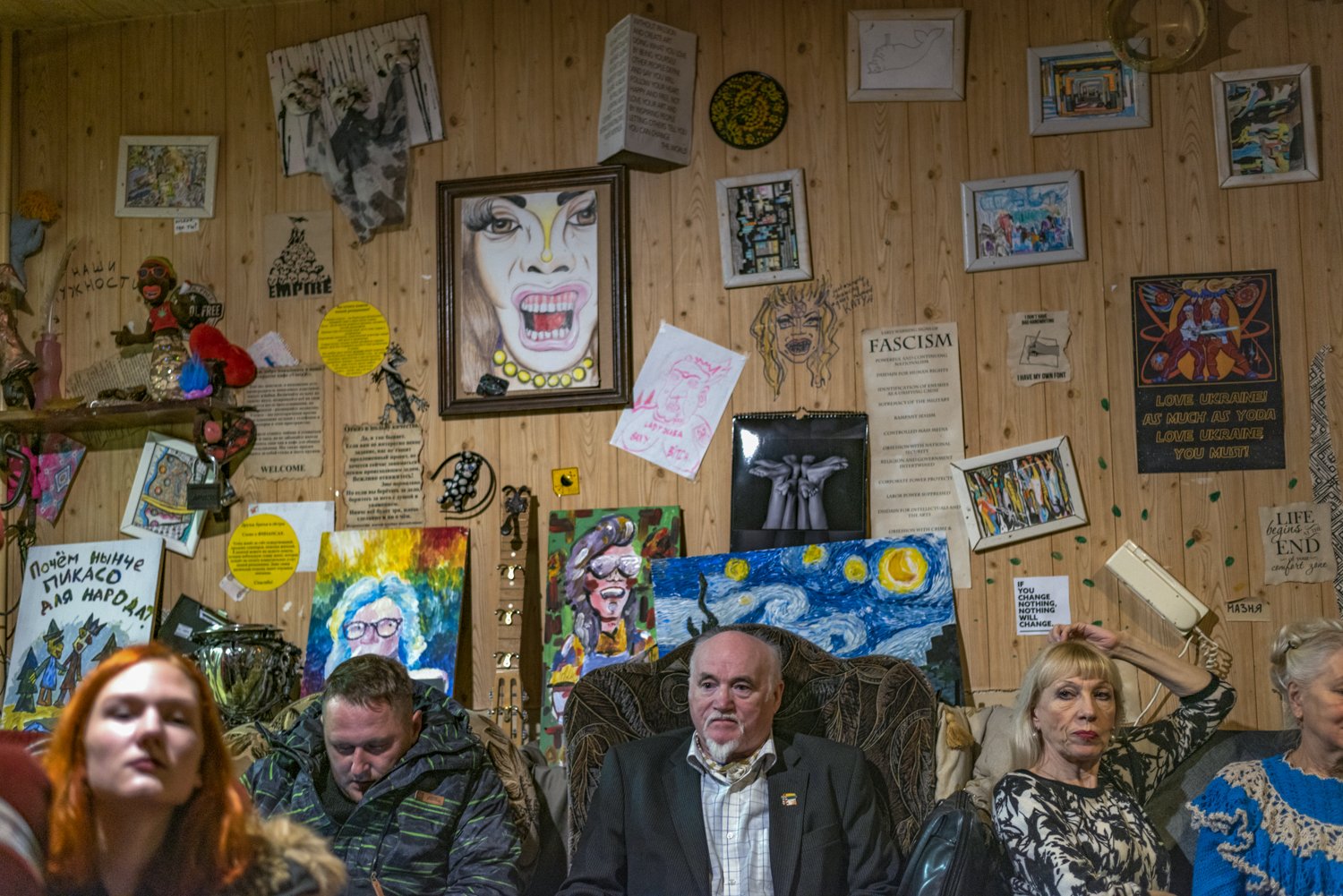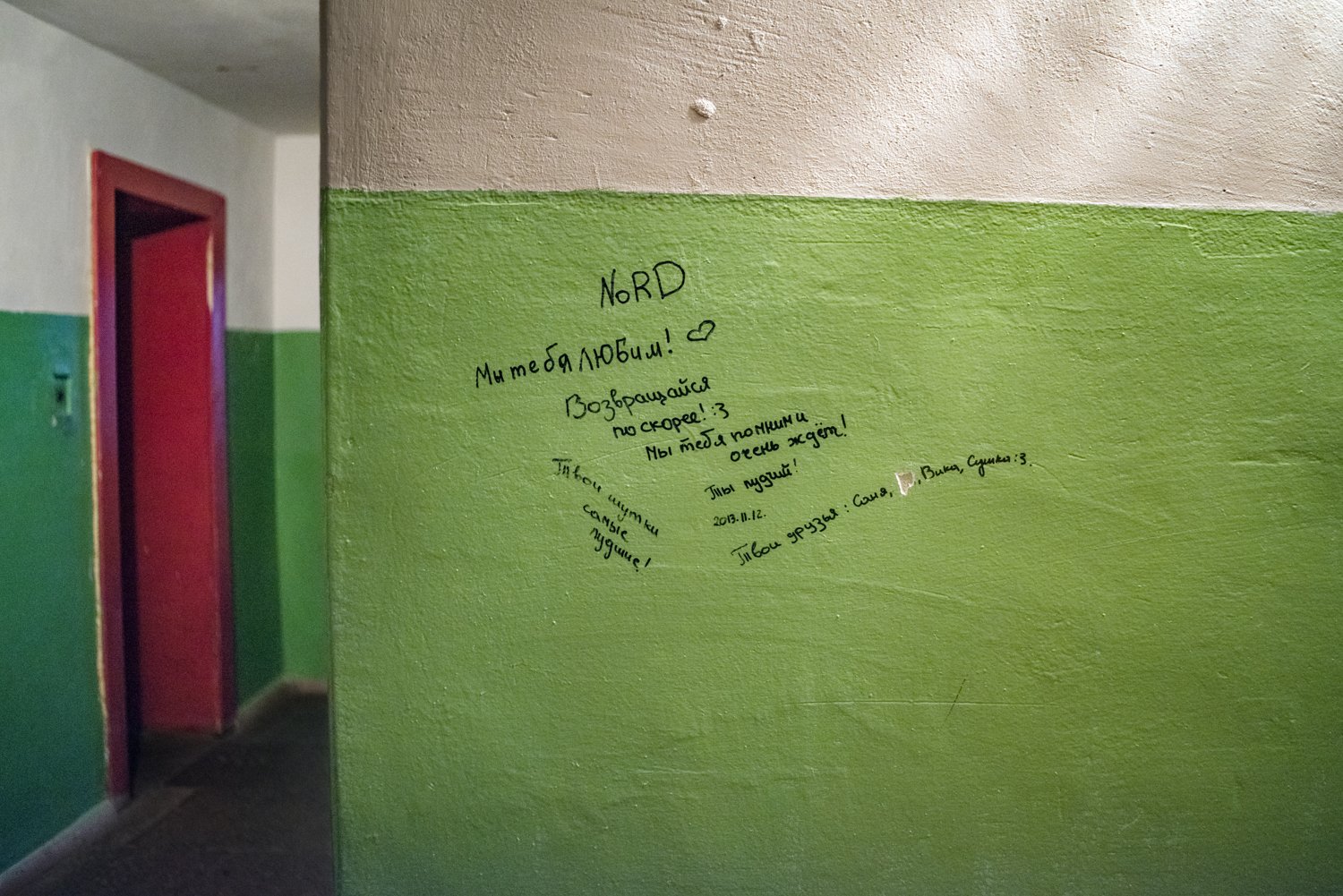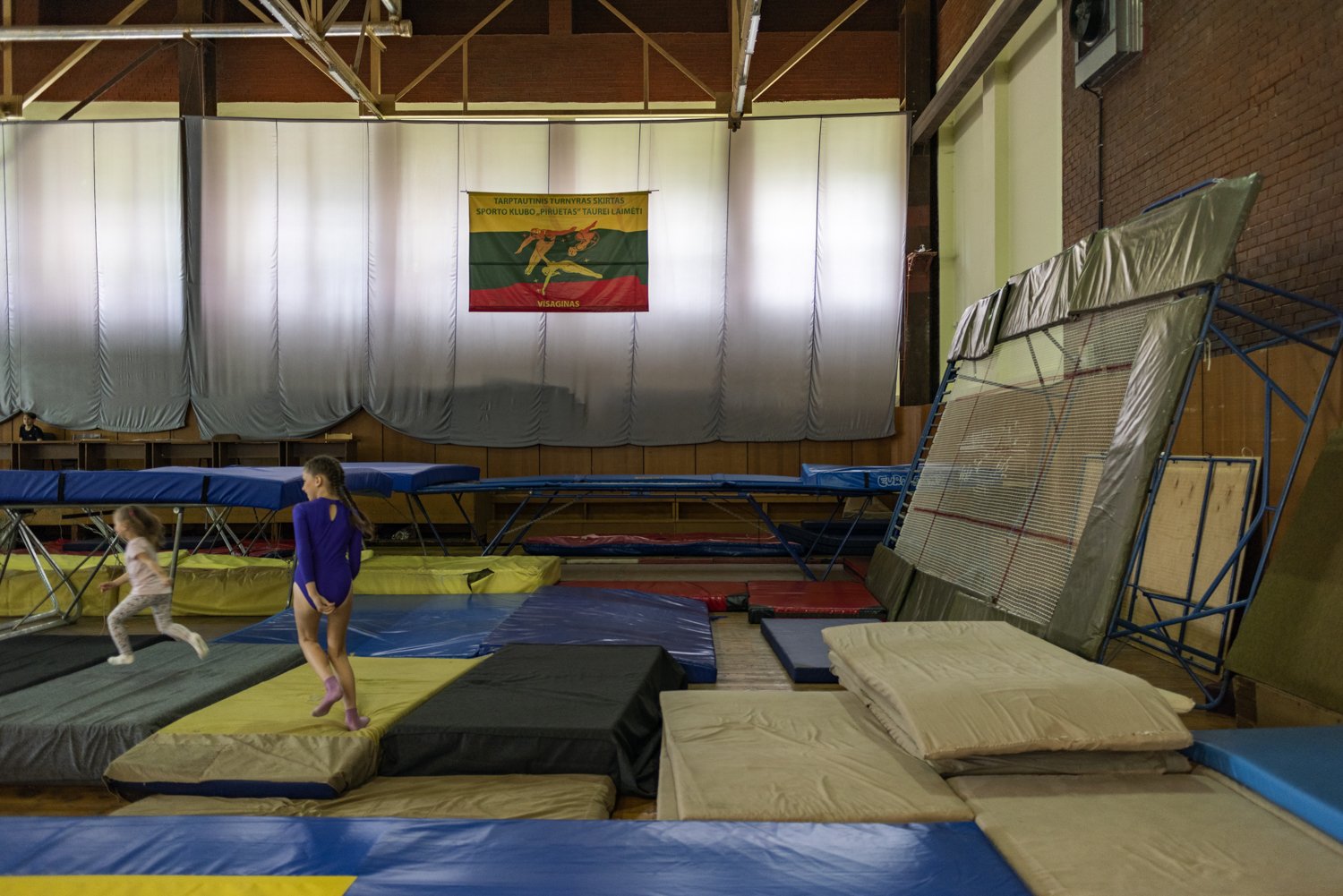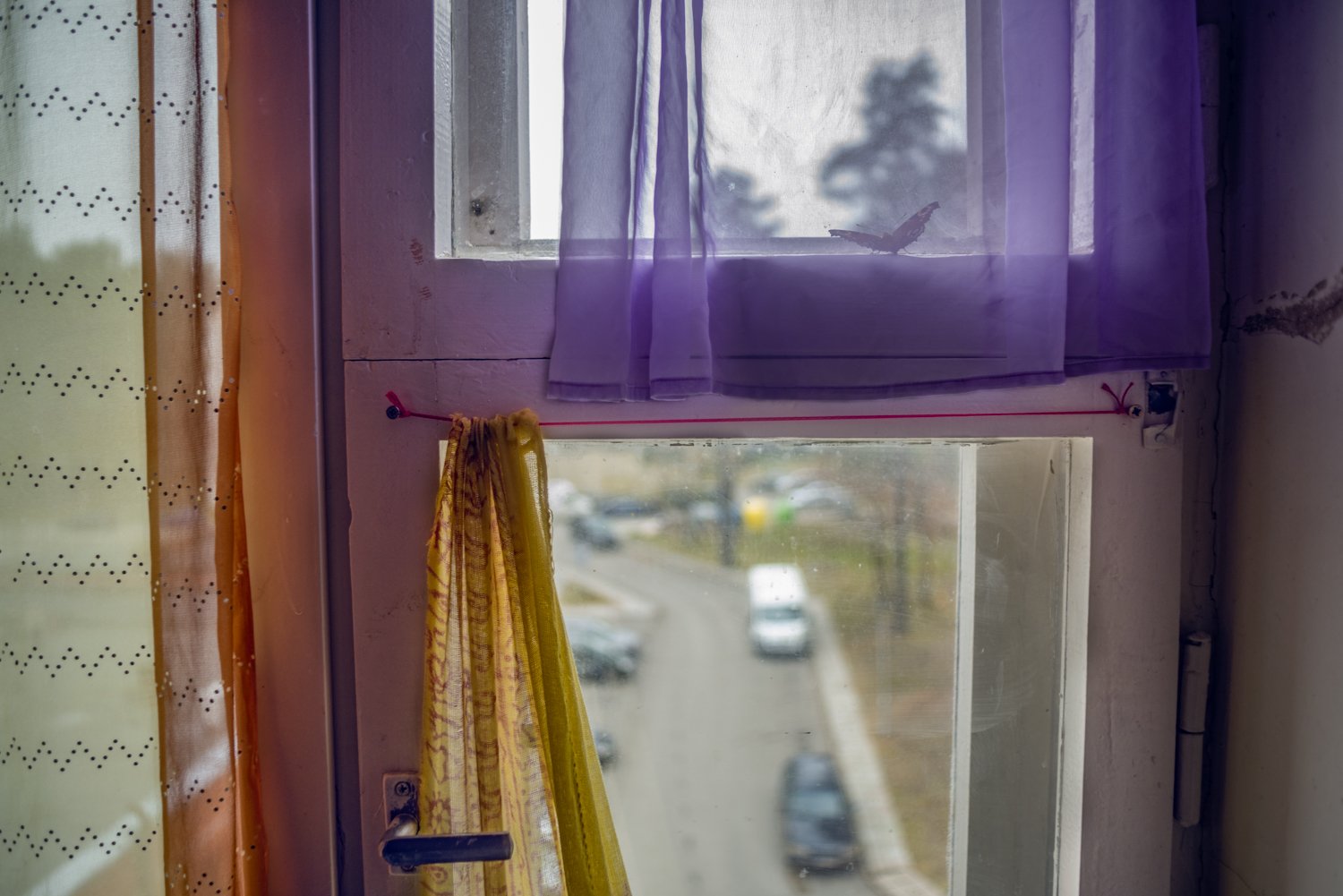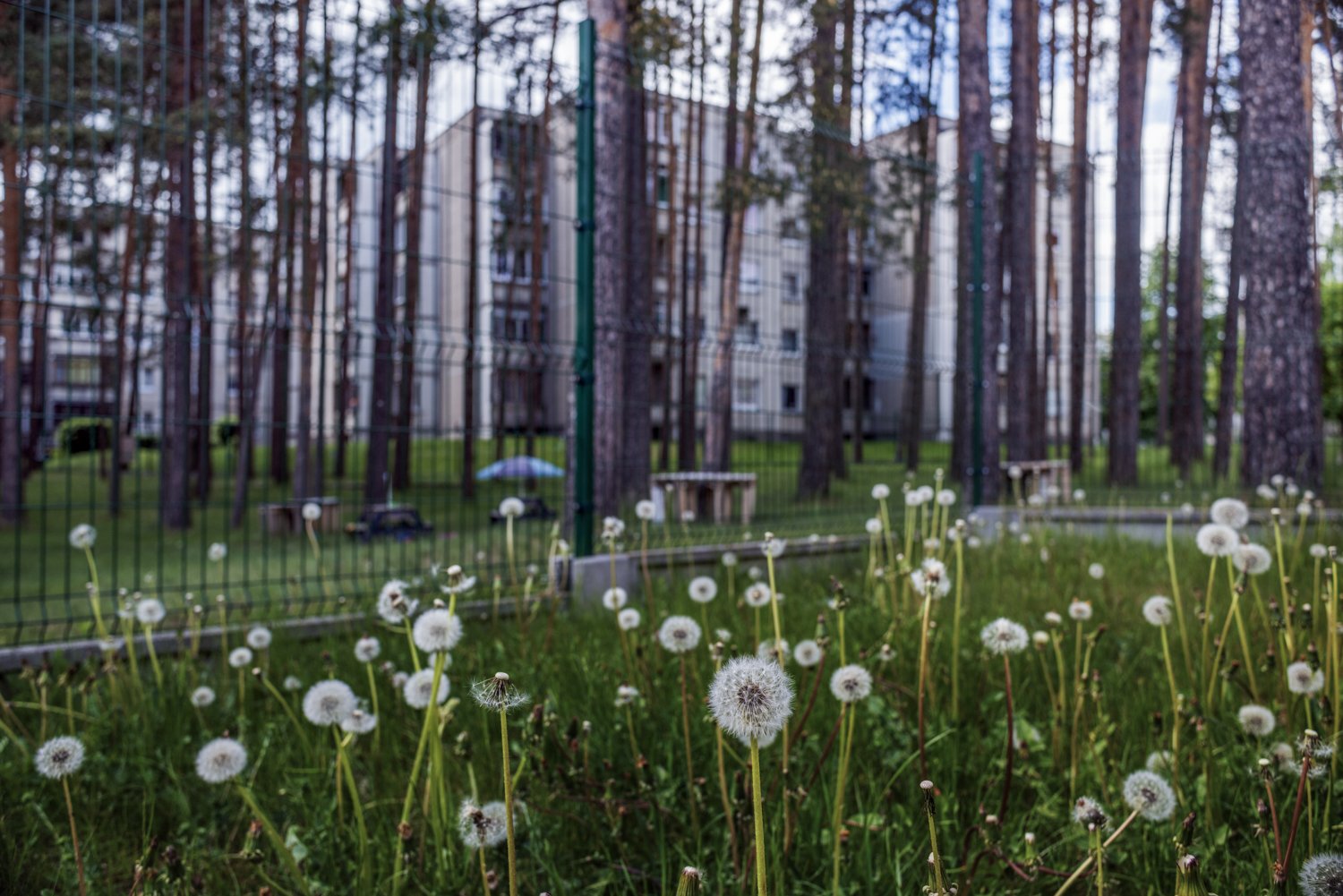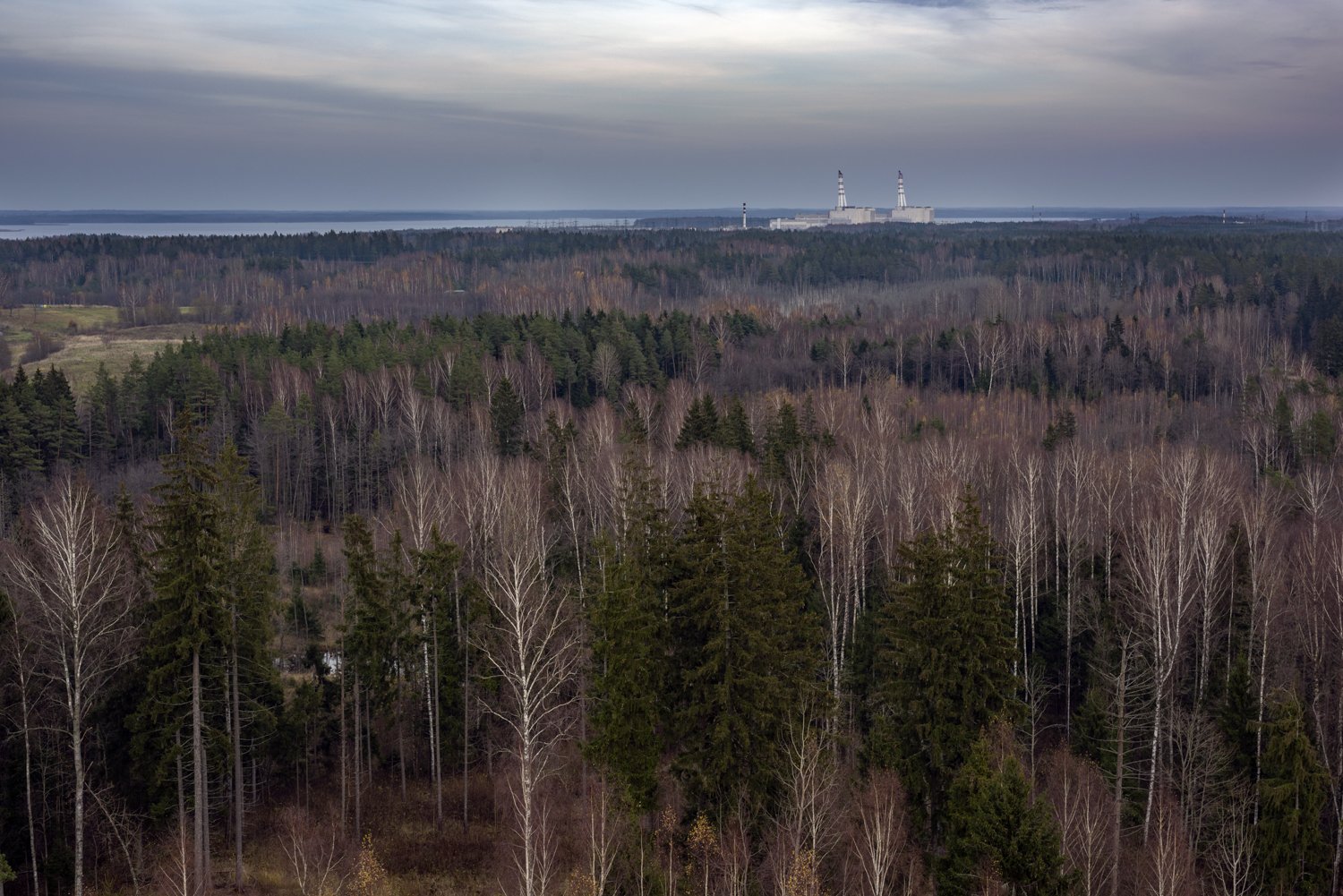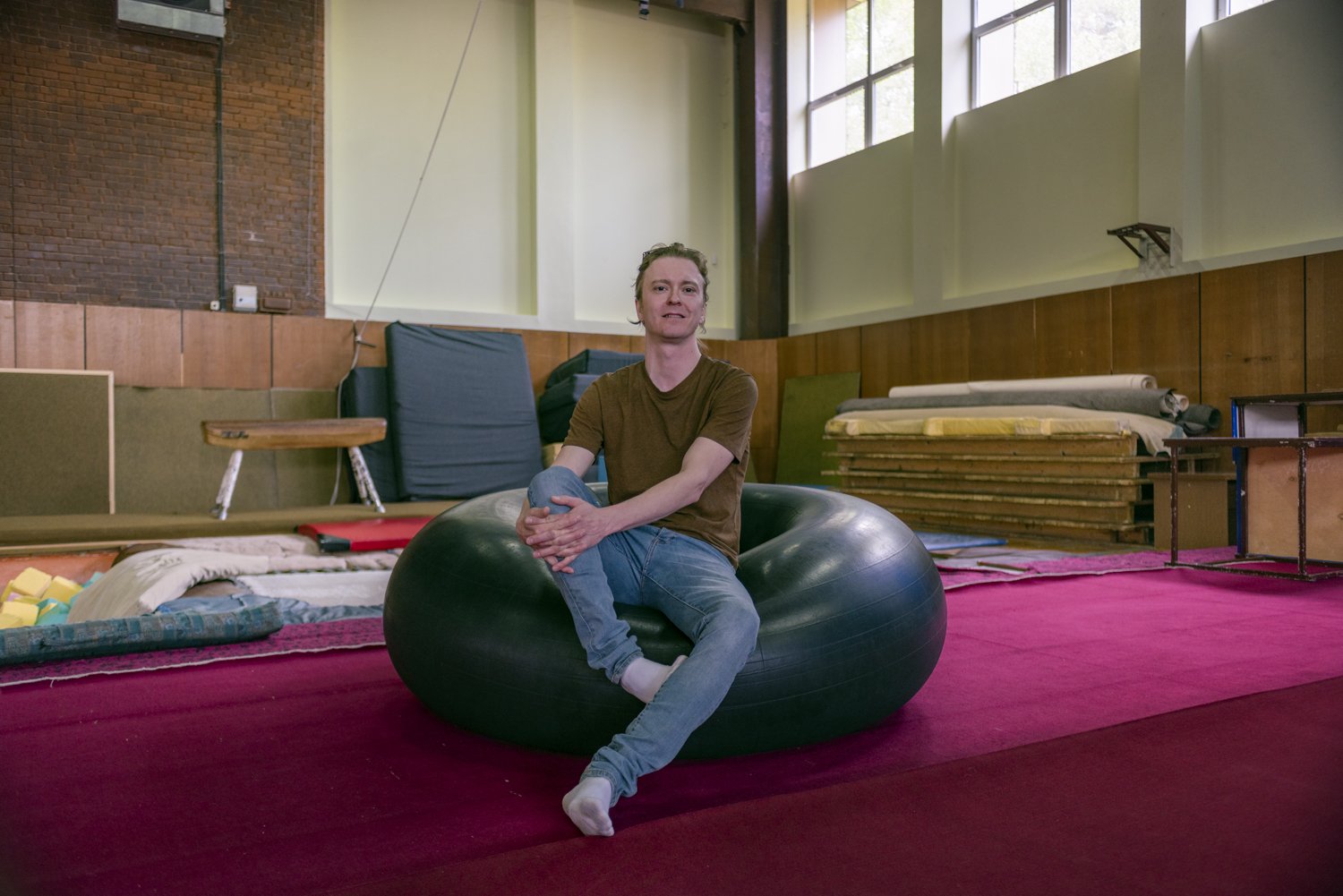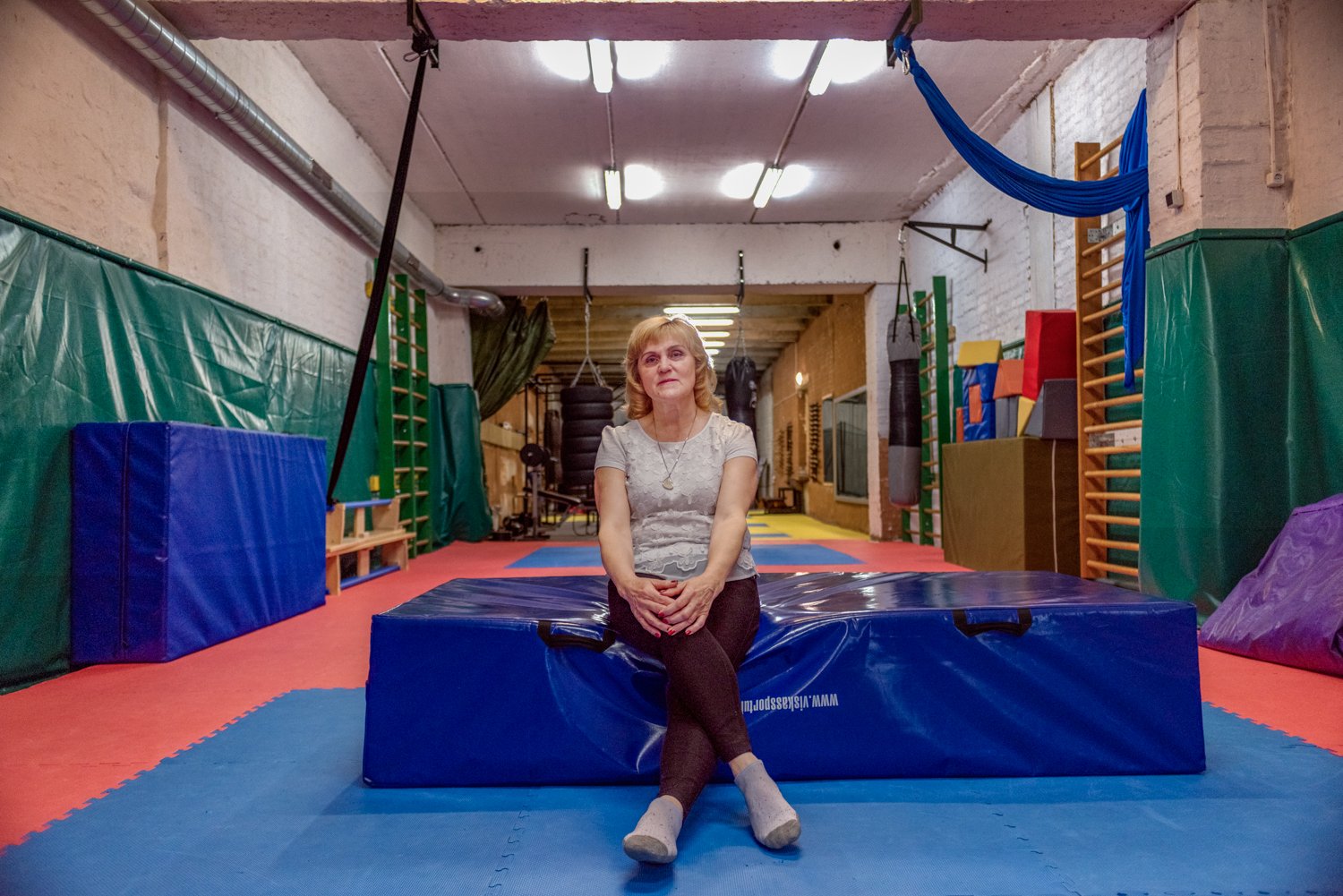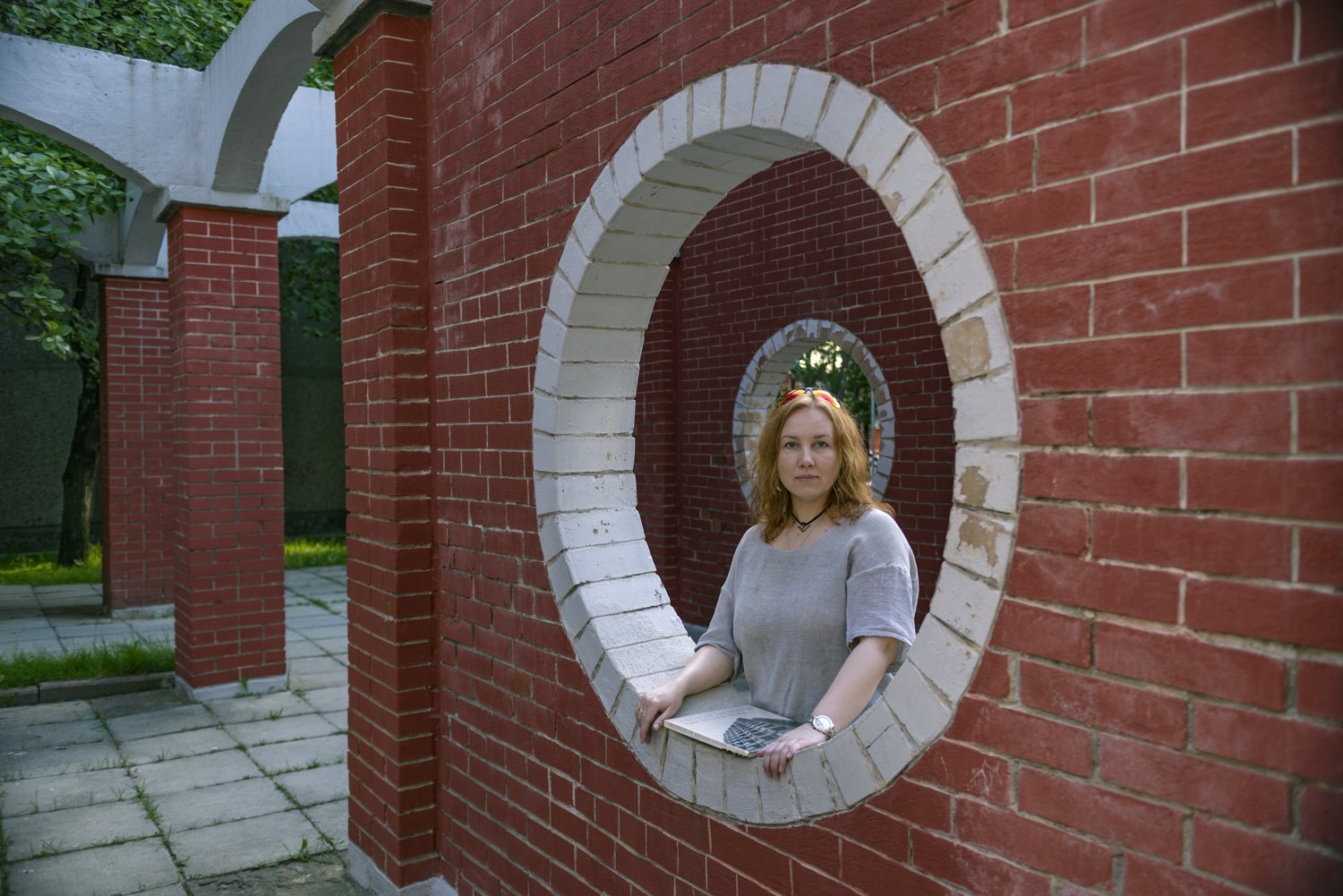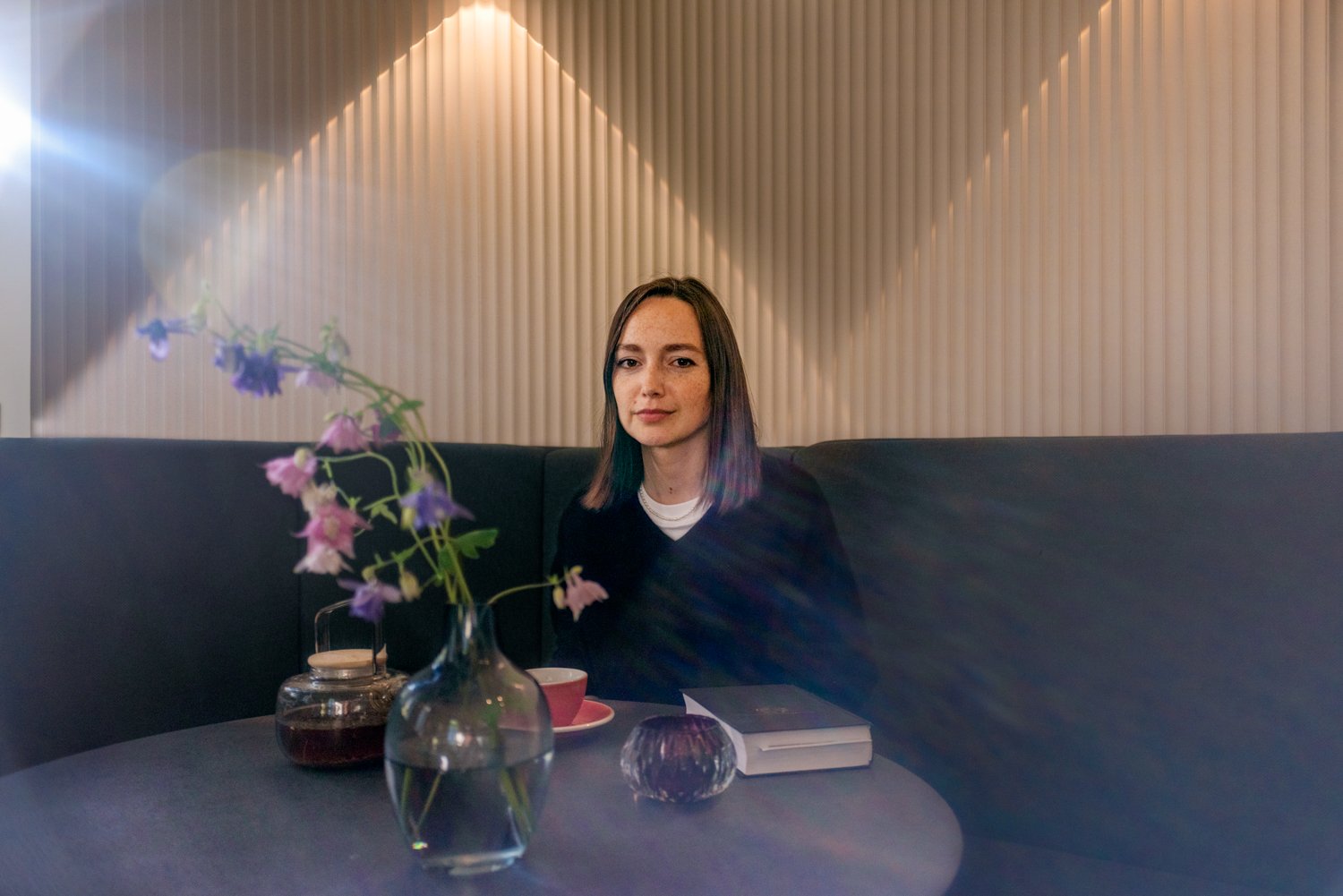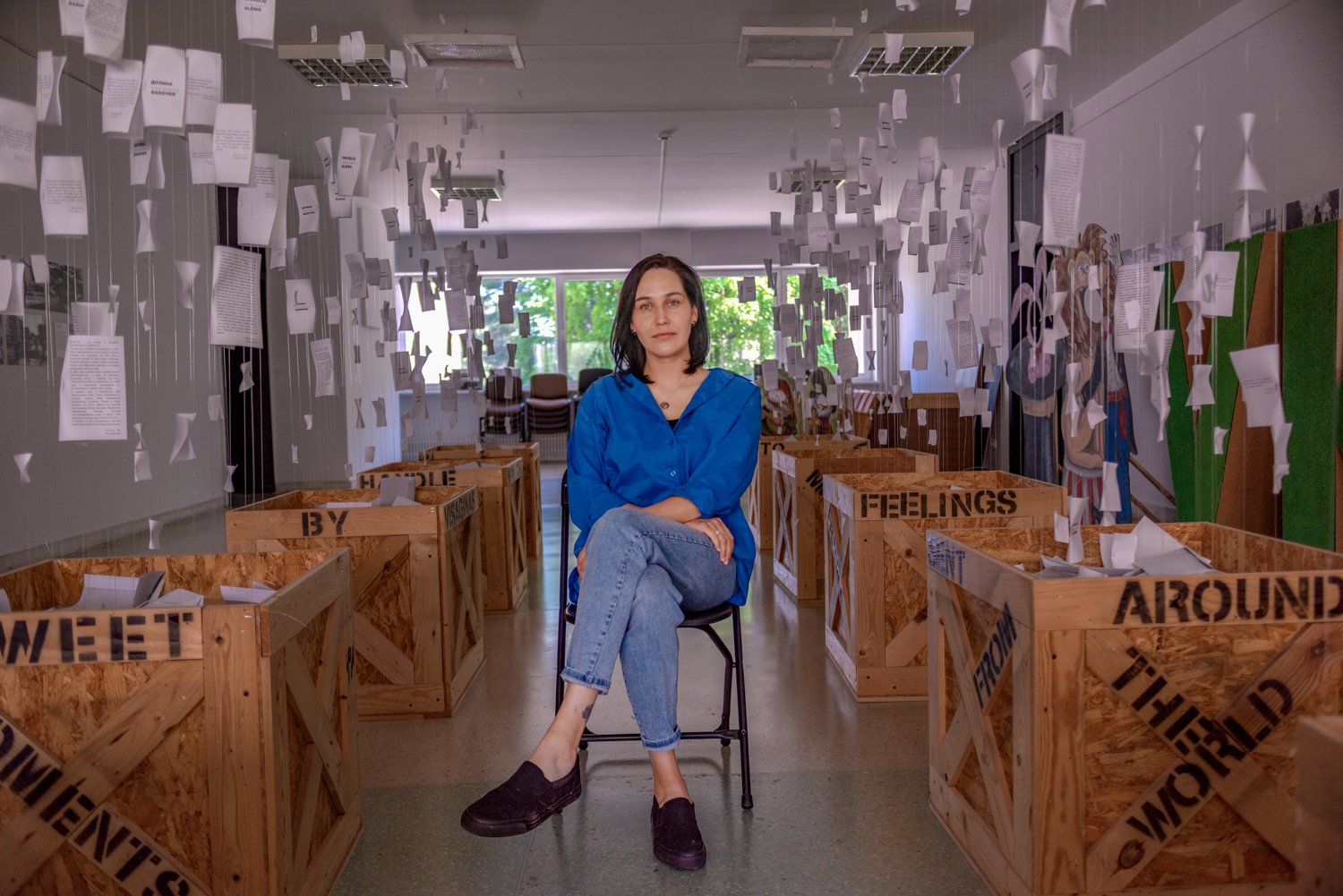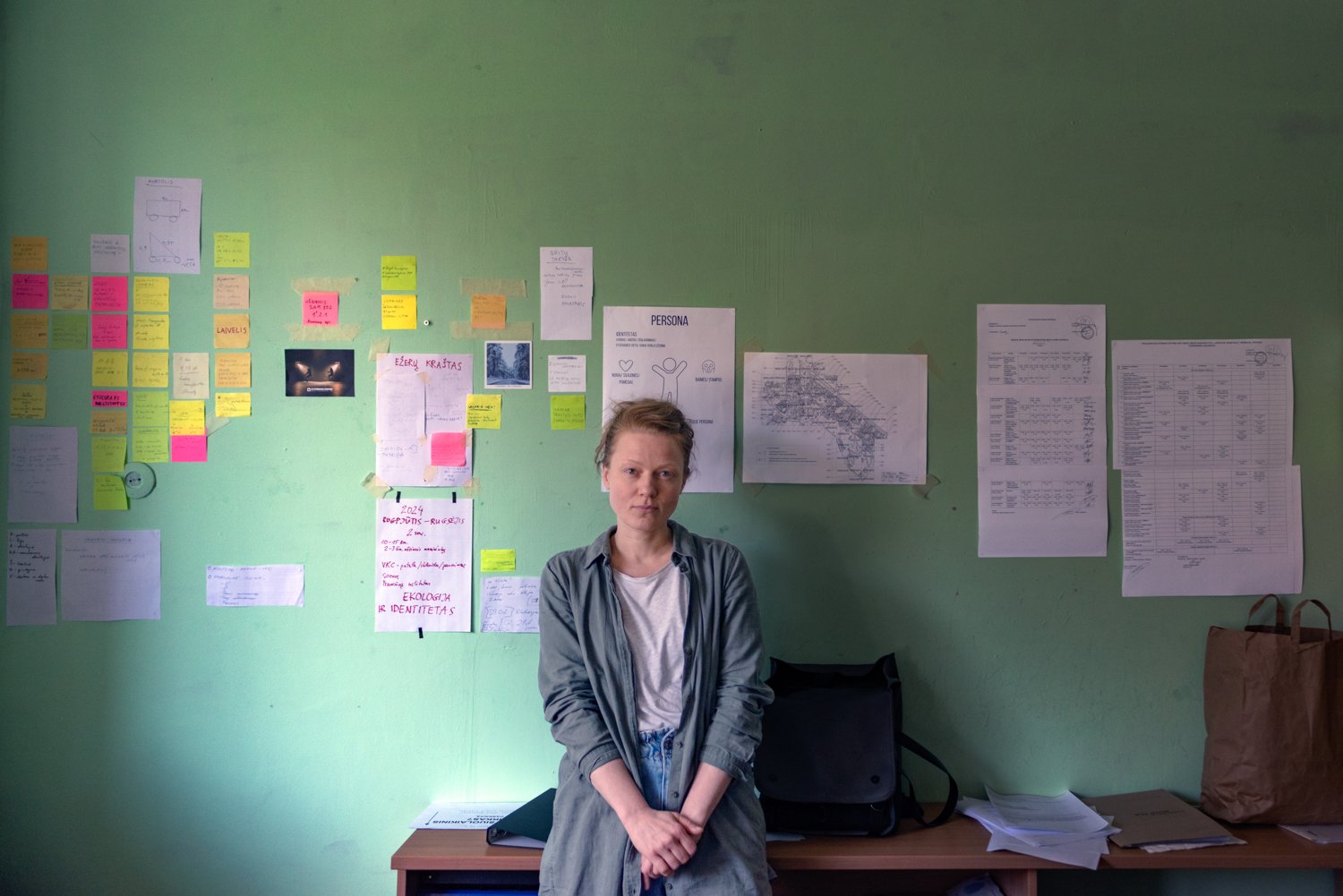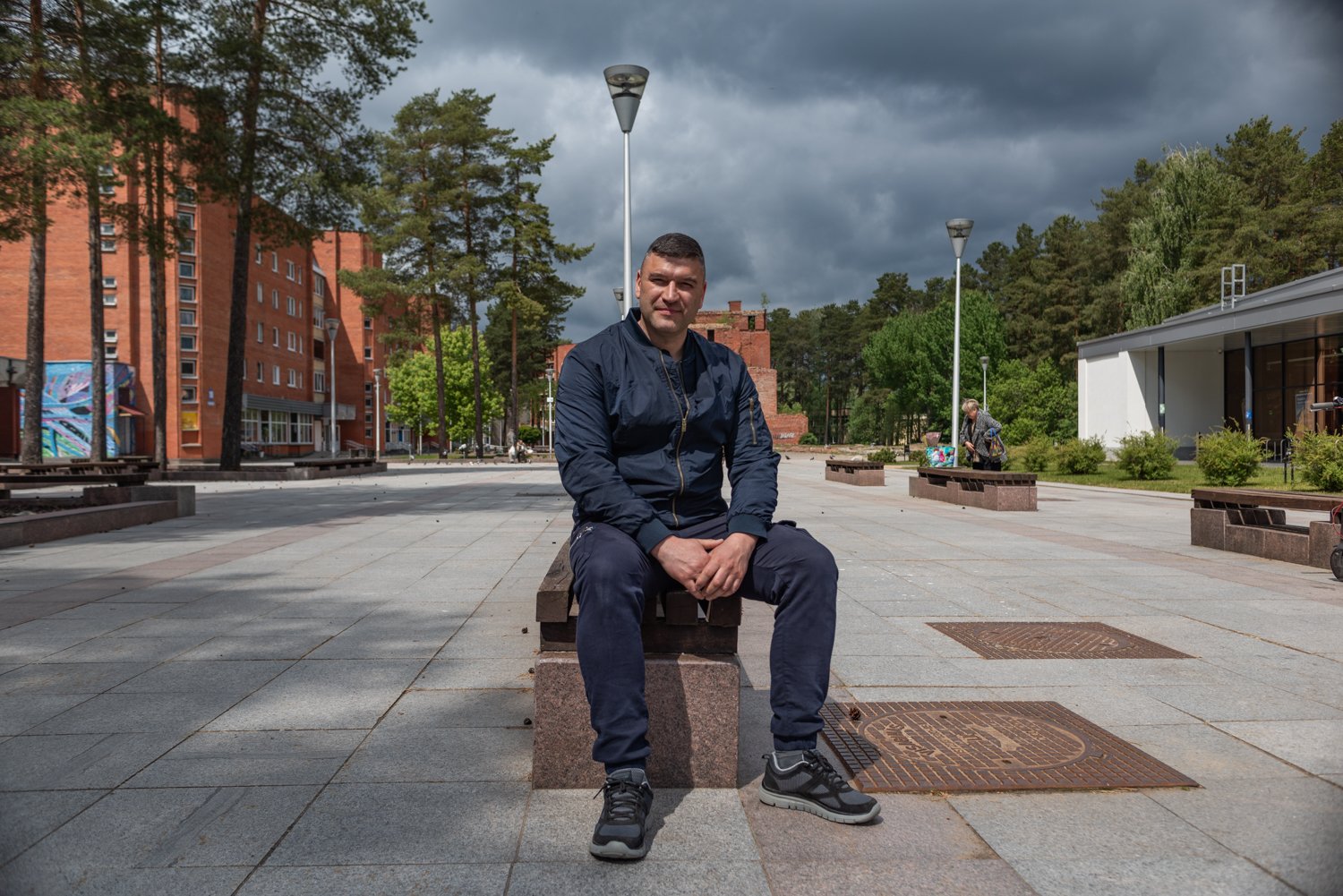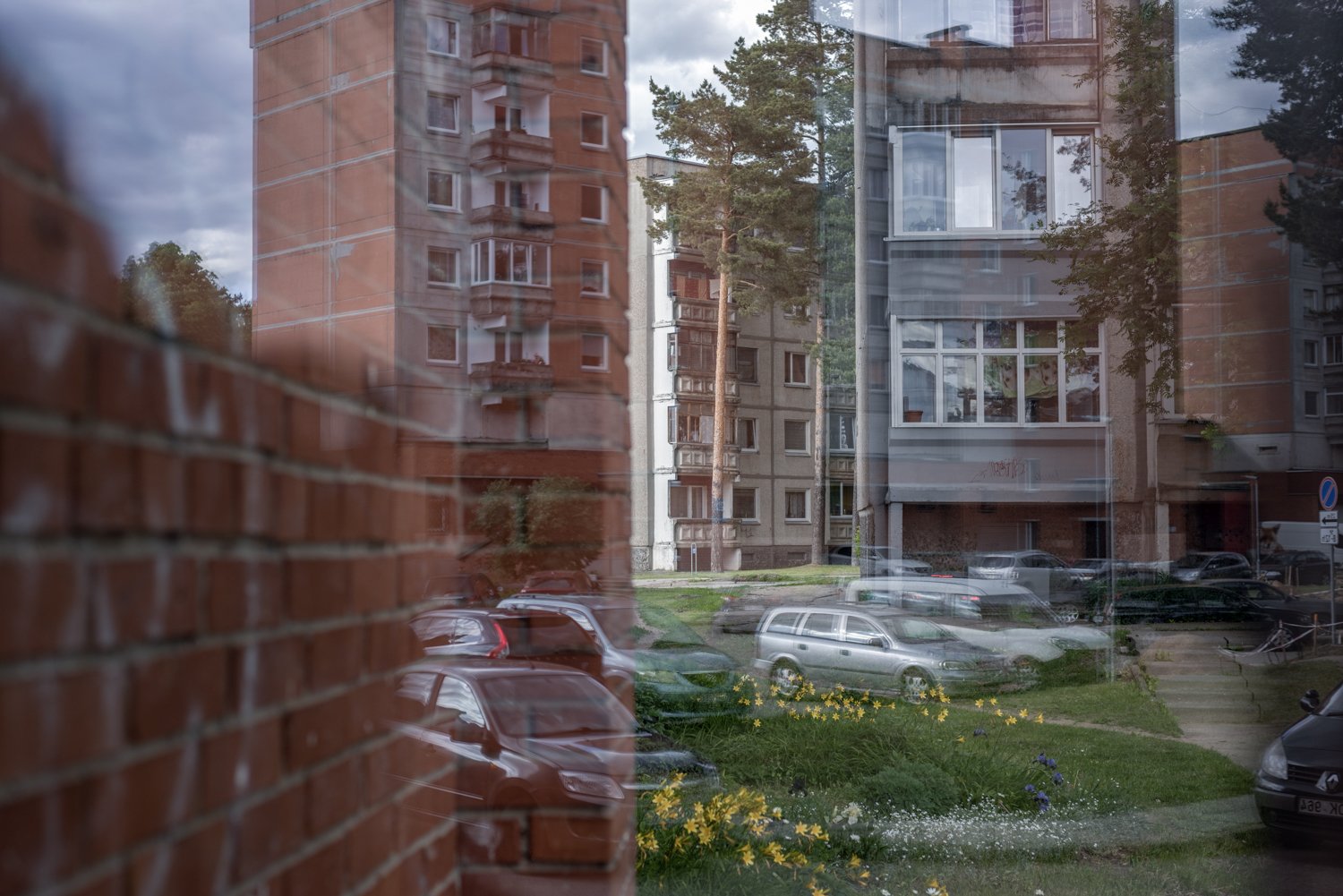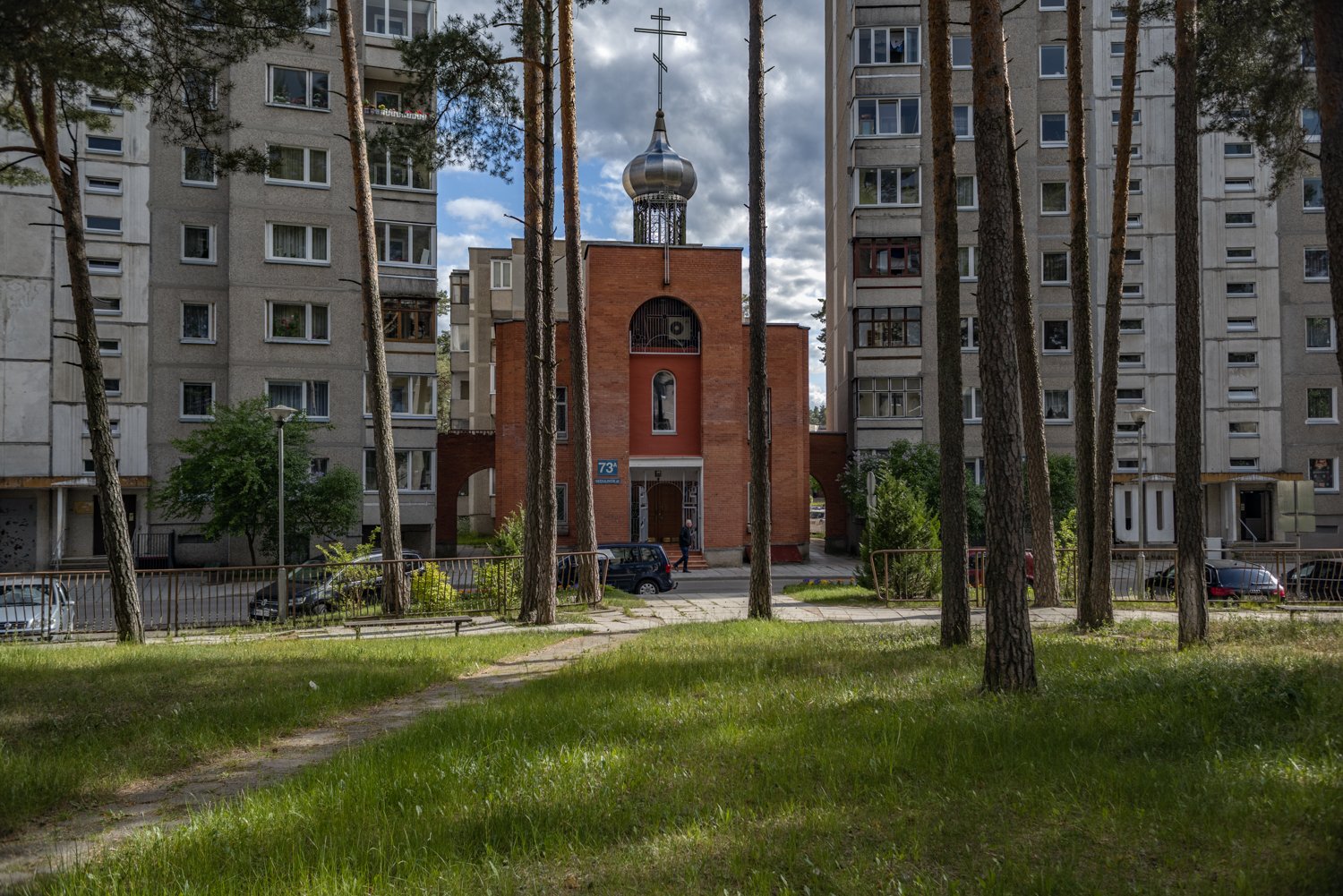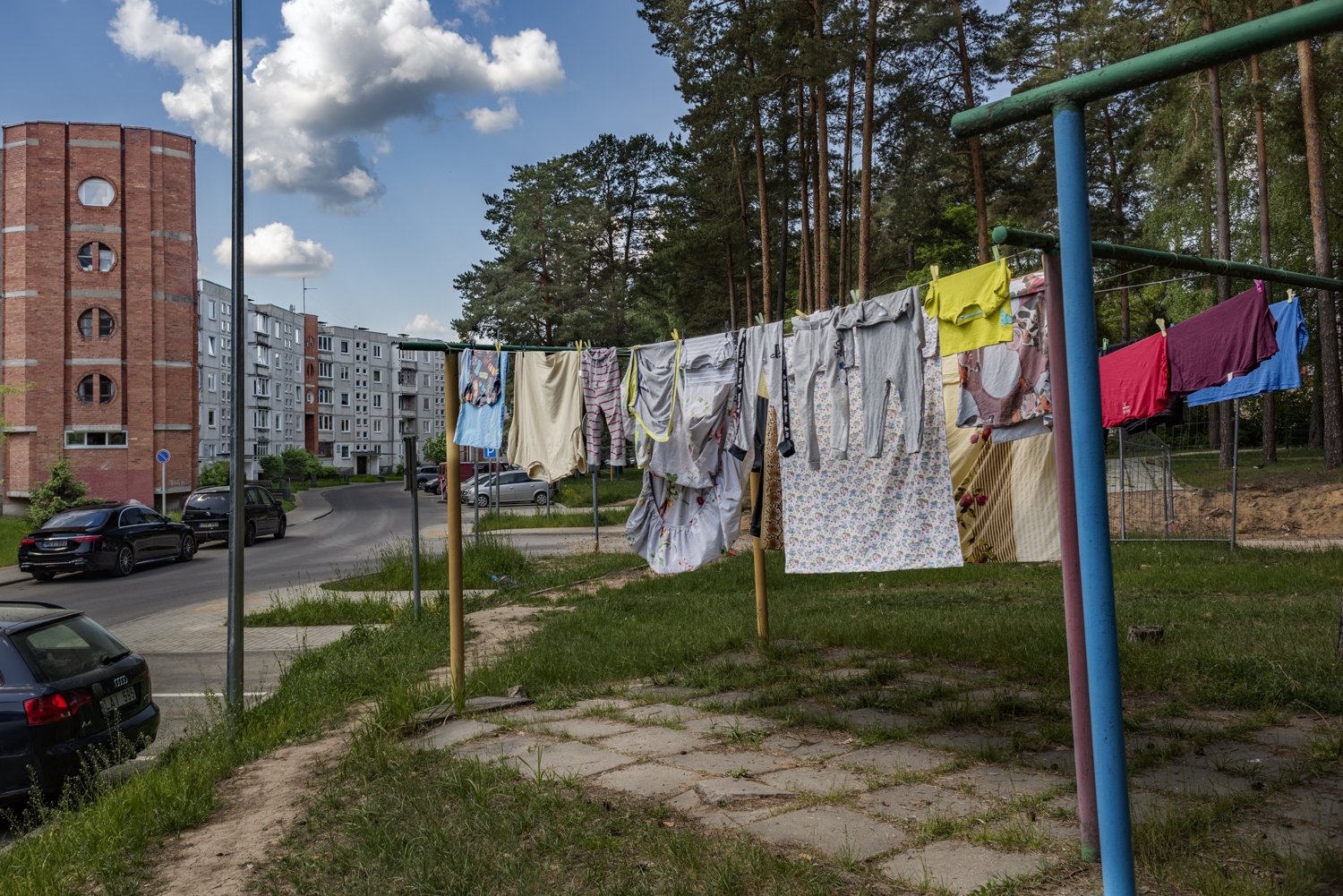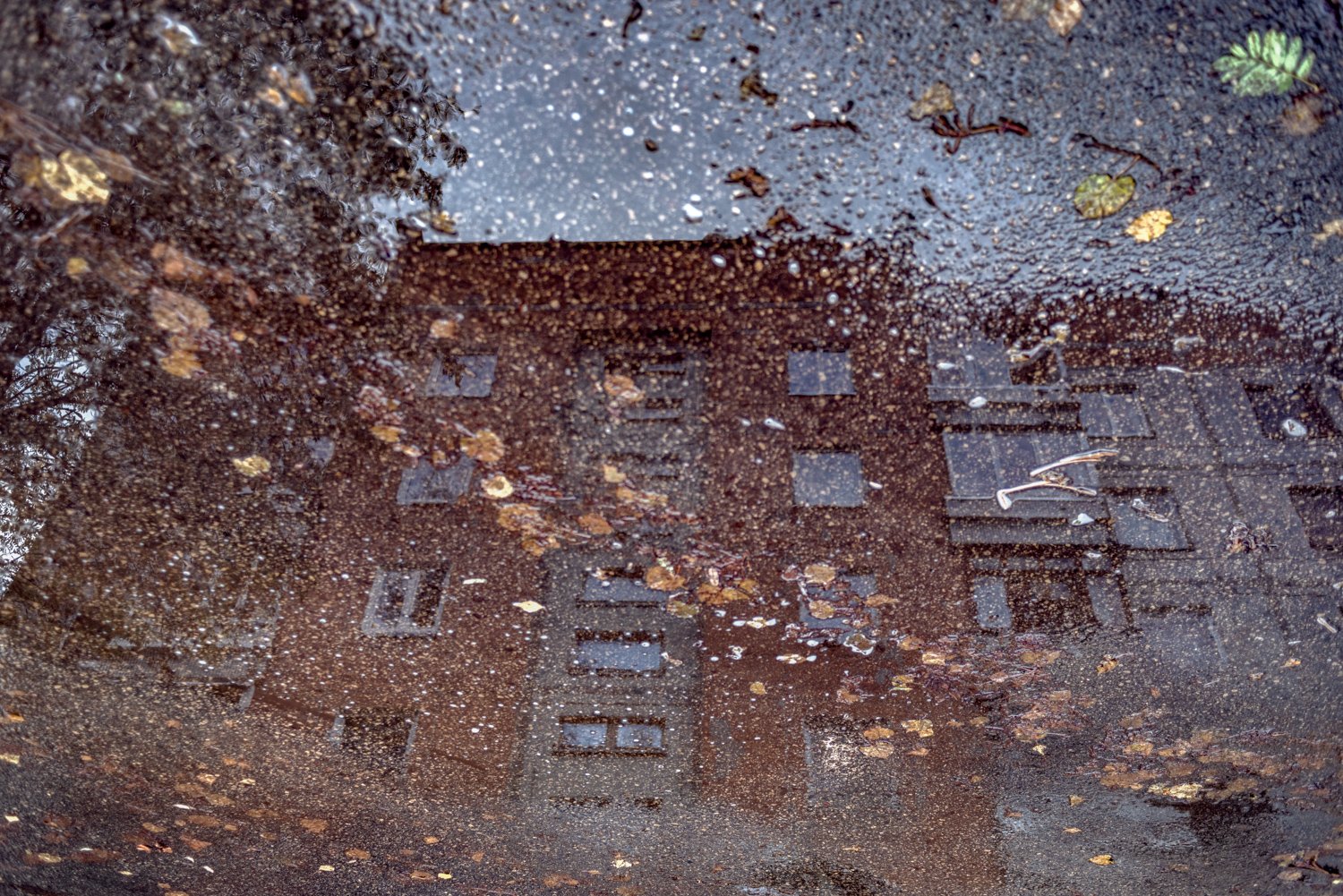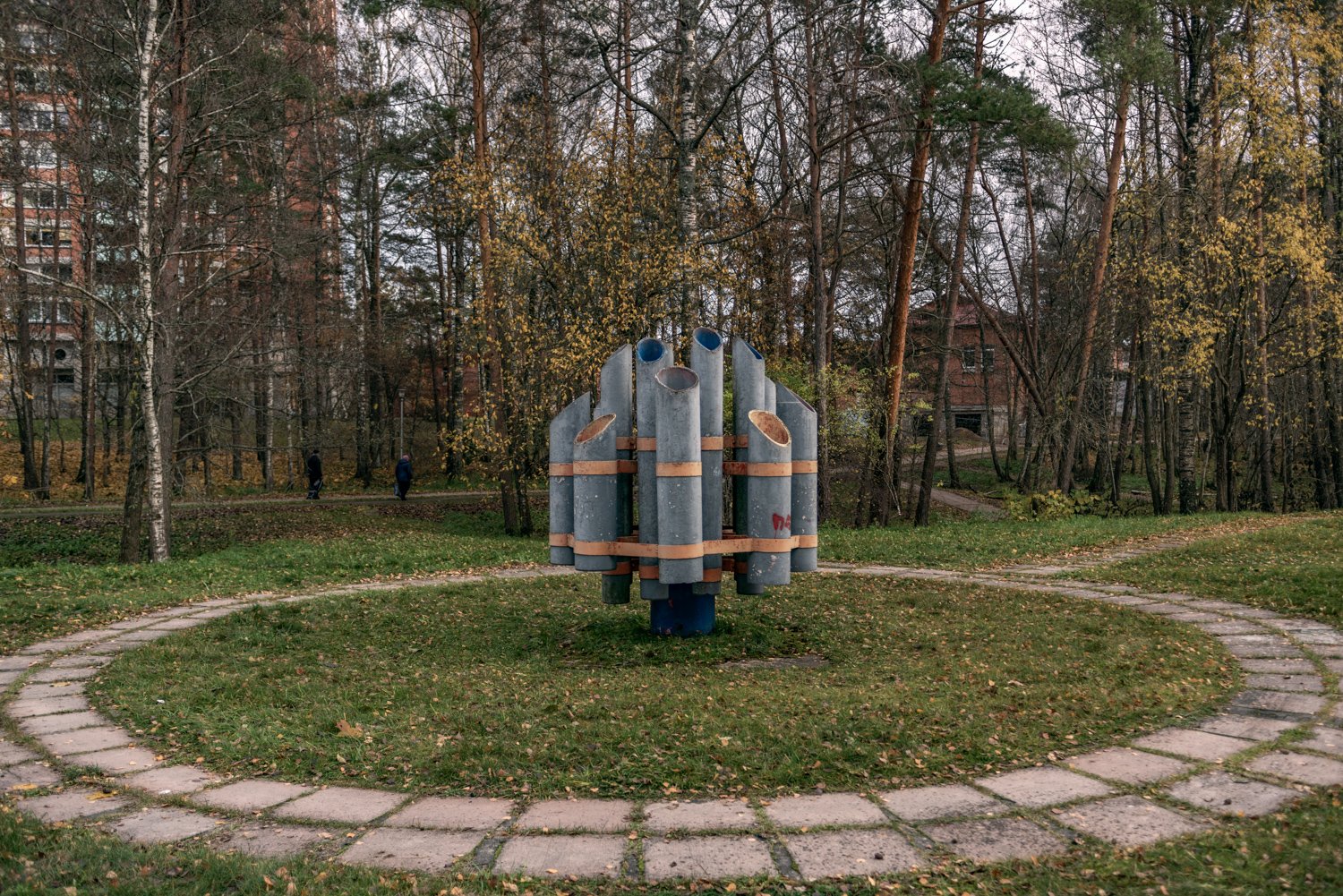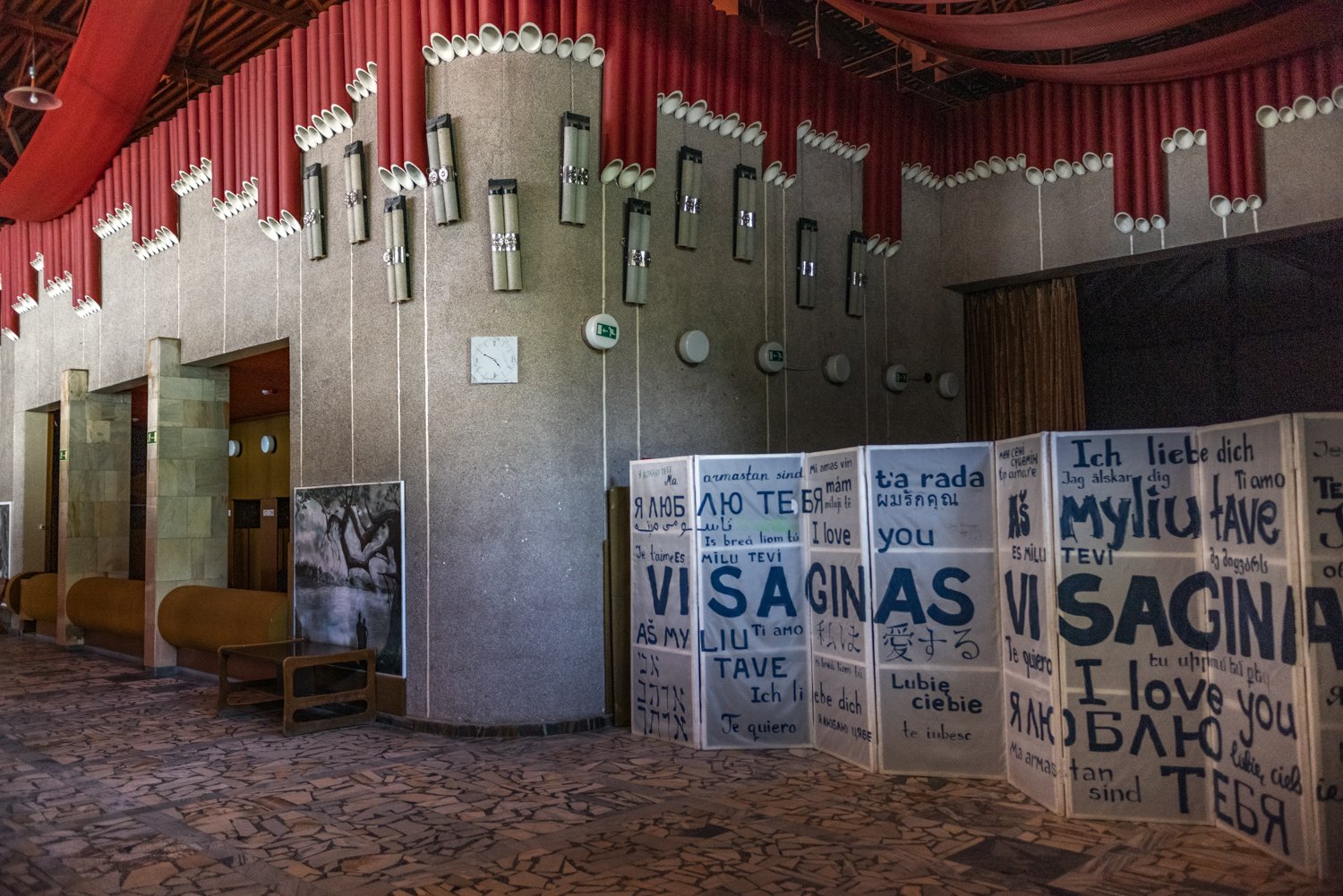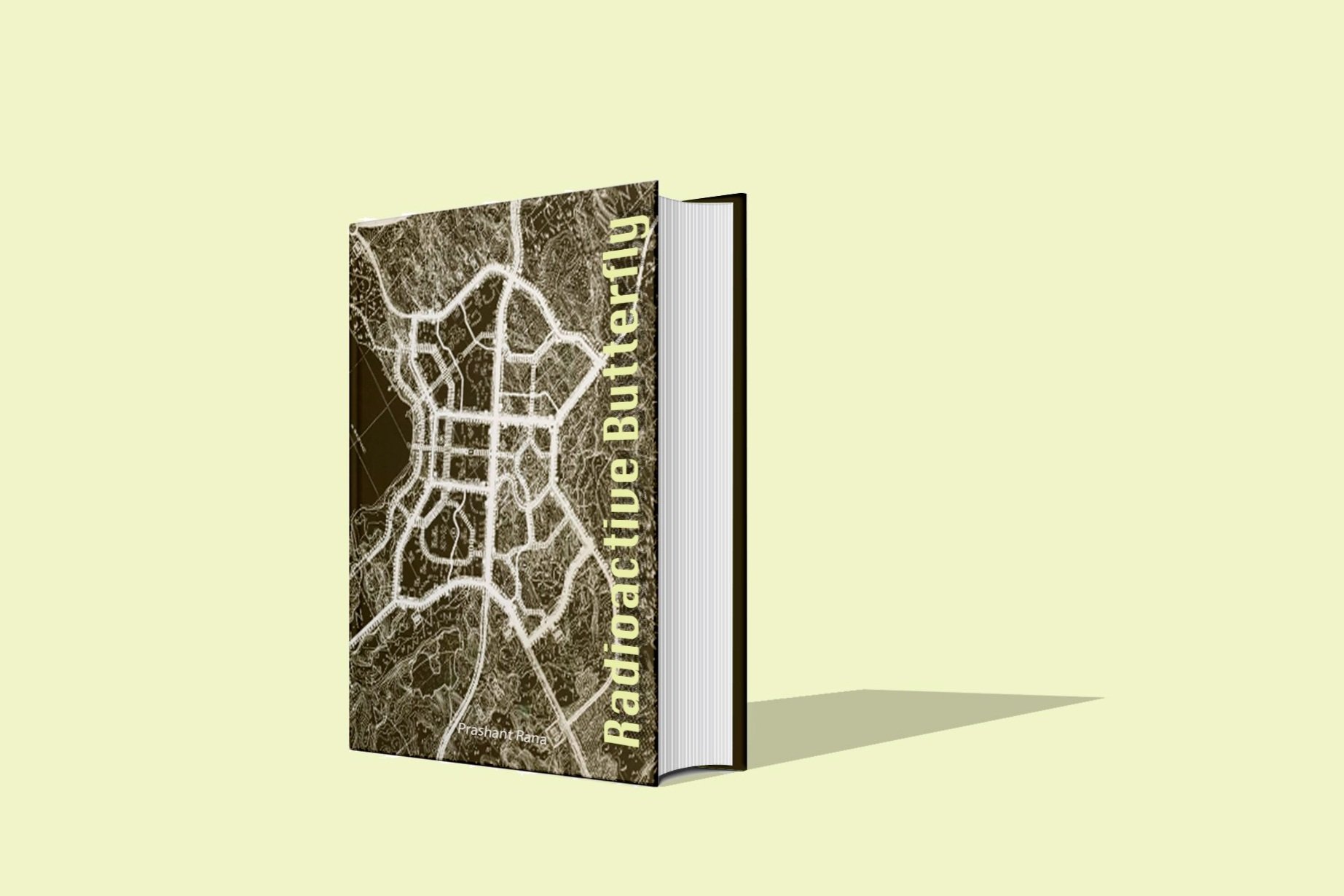ENGLISH - LIETUVIŲ KALBA - РУССКИЙ
EN: This documentary project chose me somehow. Like many of us, before 2nd August 2017, I had also never heard of Visaginas, or Ignalina nuclear power plant. I was celebrating my exhibition at Vilnius town hall on the Roma holocaust remembrance day. A man, or a woman (sincerely speaking, I don't remember who) came closer and congratulated me on my photos of Roma nomads (gypsies), and appreciated that I focused on the future of children growing under social segregation. The conversation deepened, and the visitor mentioned their town in Lithuania.
"Visaginas, a Russian bubble as they call us" were the words that stayed in my mind. Why a Russian bubble? Is it because of the language? But, so many people speak Russian even in Vilnius. Is it because of the Soviet history of Lithuania? But then that history should be spread all over this relatively small country. My brain kept asking questions, and kept trying to come up with some sort of explanation. After four days, I found myself sleeping on the floor of an art centre in Visaginas.
From the day I decided to be a documentary photographer, socio-political topics have captivated my camera. I wanted to feel this Russian bubble. And, I was not feeling anything different from any of the places that I have visited in my life. Every place is unique, and so was this city. I stayed for five days in Visaginas on my first visit. I walked around the streets, admired the beauty of the pristine lake on the banks of which the city was constructed, and observed the people. It took a couple of days, but slowly I noticed that people didn't seem happy. It took me one more day to observe that in this small town, I saw more elderly people walking in the street, but not many children or adults.
A conversation with Alex from the art point Tochka, helped me clarify the reasons why this perfectly built town didn't feel perfect to me. Six years later, I have now made countless visits to Visaginas. In every visit, I found a piece of world history, hidden in plain sight in this city. Every article I read about Visaginas for my research in this project, led me to several existential questions we all face. Identity, social bonding, and political policies around it, inward migration, independence, freedom of expression, nuclear power in the world, and the former Soviet Union, everything is interweaved in this small town where the longest street is little over two kilometres.
A perfect design, which stayed incomplete. A group of people, that took bold decisions, and life demanded more from them, which they gave. This documentation that I present to you through this book, is a window to the deeply engaging story of Visaginas. I wish there was more that I could do as a photographer. But photos, like words, have their limits. One can use them to write essays and poetry, but it remains incomplete unless the viewers bring their part to the equation. This is why I bring this project to you, so you can also put your part.
By supporting this project, you will not only help to bring an important piece of world history out in the public. You will also encourage independent journalists like me to engage in deeper and longer stories, neutral of political propagandas. Stories where the journalist has lived it, before covering it, and presenting it to the people.
Following is a presentation with further information and details of the project, why this project should be supported, and different ways to do so.
Please click on "Rewards" to see how you can support the book, and what you will get in return.
-----------------------------------X-X-X-----------------------------------
LT: Šis dokumentinis projektas mane kažkaip pasirinko. Kaip ir daugelis, iki 2017 m. rugpjūčio 2 d., aš taip pat nebuvau girdėjęs apie Visagino ar Ignalinos atominę elektrinę. Tą dieną aš švenčiau savo parodos atidarymą Vilniaus rotušėje Romų holokausto atminimo dienos proga. Vyras ar moteris (nuoširdžiai kalbant, neatsimenu kas) priėjo arčiau ir pasveikino mane su romų klajoklių (čigonų) fotografijų paroda ir įvertino tai, kad mano dėmesys sutelktas į vaikų, augančių socialinėje segregacijoje, ateitį. Užsimezgė pokalbis, ir pašnekovas paminėjo miestelį Lietuvoje.
“Visaginas - rusiškas burbulas, kaip jie mus vadina”. Tai buvo žodžiai, kurie liko mano galvoje. Kodėl rusiškas burbulas? Ar tai dėl kalbos? Tačiau tiek daug žmonių kalba rusiškai net Vilniuje. Ar tai dėl sovietinės Lietuvos istorijos? Bet tada tai būtų žinoma visoje , palyginti mažoje, šalyje. Mano smegenys vis klausinėjo ir vis bandė sugalvoti kokį nors paaiškinimą. Po kelių dienų aš jau miegojau ant grindų Visagino meno centre.
Nuo tos dienos, kai nusprendžiau būti dokumentiniu fotografu, socialinės ir politinės temos patraukė mano fotoaparatą. Norėjau pajusti šį rusišką burbulą. Ir aš nepajutau nieko, kas skirtųsi nuo bet kurios kitos vietos, kurią aplankiau per savo gyvenimą. Kiekviena vieta yra unikali, toks buvo ir šis miestas. Pirmo vizito metu Visagine išbuvau penkias dienas. Aš vaikščiojau gatvėmis, grožėjausi nepaliestu ežeru, kurio pakrantėse buvo pastatytas miestas, stebėjau žmones. Tai užtruko porą dienų, ir pamažu aš pradėjau pastebėti, kad žmonės neatrodo laimingi. Man prireikė dar vienos dienos, kad pastebėčiau miestelio gatvėse vaikščiojant daugiau pagyvenusių žmonių, bet nedaug vaikų ar suaugusių.
Pokalbis su Aleksu iš Menų rezidencijos ‘’ Tochka’’ padėjo man išsiaiškinti priežastis, kodėl šis tobulai pastatytas miestelis man nesijautė tobulas. Per šešerius metus turėjau nesuskaičiuojamą daugybę vizitų į Visaginą. Kiekvieno apsilankymo metu rasdavau gabalėlį pasaulio istorijos, paslėptos šio miesto paveiksle. Kiekvienas straipsnis, kurį skaičiau apie Visaginą savo tyrinėjimui šioje srityje , vedė mane link egzistencinių klausimų, su kuriais mes visi susiduriame. Tapatybė, socialiniai ryšiai ir su tuo susijusi politinė strategija, vidinė migracija, nepriklausomybė, žodžio laisvė, branduolinė energetika pasaulyje ir buvusioje Sovietų Sąjungoje - viskas yra susipynę šiame miestelyje, kur ilgiausia gatvė yra šiek tiek daugiau nei du kilometrai.
Tobulas dizainas, kuris liko neišbaigtas. Žmonės, kurie priėmė drąsius sprendimus, ir gyvenimas iš jų pareikalavo daugiau, ką jie ir davė. Šis dokumentas, kurį pristatau jums per šią knygą yra langas į giliai įtraukiančią Visagino istoriją. Norėčiau , kaip fotografas ,galėjęs padaryti daugiau. Tačiau nuotraukos, kaip ir žodžiai, turi savo ribas. Galima juos naudoti rašant esė ir poeziją, bet ji lieka neišsami, nebent žiūrovai prideda savo dalį į lygtį. Štai kodėl aš jums pristatau šį projektą, taigi taip pat galite įnešti savo dalį.
Palaikydami šį projektą ne tik padėsite paviešinti svarbią pasaulio istorijos dalį. Taip pat paskatinsite tokius nepriklausomus žurnalistus kaip aš įsitraukti į gilesnes ir ilgesnes istorijas, neutralias politinei propagandai. Istorijas, kurias žurnalistas išgyveno, prieš nušviesdamas ir pristatydamas žmonėms.
Toliau pateikiamas pristatymas su daugiau informacijos ir projekto detalių, kodėl projektas turėtų būti remiamas ir įvairūs būdai tai padaryti.
-----------------------------------X-X-X------------------------------------
RU: Этот проект почему-то сам меня выбрал. Как и многие из нас, до 2 августа 2017 года я никогда не слышал ни о Висагинасе, ни об Игналинской АЭС. Тогда я отмечал свою выставку в Вильнюсской ратуше в день памяти погибших во время Холокоста Рома. Мужчина или женщина (не помню точно) подошёл/-ла ко мне и поздравил/-ла меня с фотографиями Рома-кочевников (цыган). Он/она оценил/-ла, что я сосредоточился на будущем детей, растущих в условиях социальной сегрегации. Разговор углубился, и гость упомянул/-ла свой город в Литве.
«Висагинас - русский пузырь. Так нас называют» — вот слова, которые остались у меня в памяти. Почему русский пузырь? Это из-за языка? Но даже в Вильнюсе очень много людей говорят по-русски. Может из-за советской истории? Но тогда эта история должна распространиться по всей относительно небольшой стране. Мой мозг продолжал задавать вопросы и пытался найти какое-то объяснение. Через четыре дня я очутилсяспящим на полу арт-резиденции в Висагинасе.
С того дня, как я решил стать фотографом-документалистом, мою камеру заполнили социально-политические темы. Мне хотелось почувствовать этот русский пузырь. И я не замечал в нём ничего отличающегося от других мест, где мне доводилось побывать. Каждое место уникально, и этот город тоже. Во время своего первоговизита я пробыл в Висагинасе пять дней. Я гулял по улицам, наблюдал за людьми, и восхищался красотой чистейшего озера, на берегу которого построен город. Это заняло пару дней. Постепенно я начал замечать, что люди не кажутся счастливыми. Мне потребовался ещё один день, чтобы рассмотреть, что в этом маленьком городке я видел больше пожилых людей, идущих по улице, нежели молодёжи.
Разговор с Алексом из арт-резиденции «Точка» помог мне прояснить, почему этот идеально построенный город не казался идеальным. Шесть лет спустя я совершил бесчисленное количество визитов в Висагинас. Каждый раз я находил частичку мировой истории, скрытую на виду в этом городе. Каждая статья о Висагинасе, которую я читал в рамках этого проекта и исследования, приводила меня к нескольким экзистенциальным вопросам, с которыми мы все сталкиваемся. Идентичность, социальные связи и политика вокруг неё, внутренняя миграция, независимость, свобода выражения мнений, ядерная энергетика в мире и бывшем Советском Союзе — все было переплетено в этом маленьком городке, где самая длинная улица составляет немногим более двух километров.
Идеальный дизайн, который остался незавершённым. Группа людей, принимавших смелые решения, от которых жизнь требовала многого, а они делали ещё больше. Материал, который я представляю вам в этой книге, — это окно в захватывающую историю Висагинаса. Как фотографу, мне хотелось бы сделать больше. Но фотографии, как и слова, имеют свои пределы. Их можно использовать для написания эссе и стихов, но они останутся неполноценными, пока зрители не внесут свой вклад в уравнение. Именно поэтому я предлагаю вам этот проект, чтобы вы тоже могли внести свою вклад.
Поддерживая этот проект, вы не только поможете донести до общественности важную часть мировой истории. Вы также будете поощрять независимых журналистов, таких как я, писать более глубокие и длинные статьи, нейтральные к политической пропаганде. Истории, которые журналист пережил сам, прежде чем осветить и представить их людям.
Следующее - презентация с дополнительной информацией, деталями и причинами, почему этот проект следует поддерживать.
Нажмите «Награды» (анг. Rewards), чтобы узнать, как вы можете поддержать книгу и что вы можете за этополучить.
EN: For any further question you can always find me on Instagram with @prashantrana_official, and send a message, or write an email, and I will try to respond as soon as possible.
LT: Spustelėkite „Apdovanojimai“, kad pamatytumėte, kaip galite paremti knygą ir ką gausite.
Jei turite daugiau klausimų, visada galite rasti mane Instagram su
@prashantrana_official, ir atsiųskite žinutę, arba parašykite el. laišką ir pasistengsiu kuo greičiau atsakyti.
RU: Если у вас возникнут дополнительные вопросы, вы всегда можете найти меня в Instagram по адресу @prashantrana_official, отправить сообщение или написать электронное письмо, и я постараюсь ответить как можно скорее.
Support the book without purchasing anything in return.
A limited edition signed copy of the book Radioactive Butterfly for 40€ + 10€ shipping=50€
A limited edition signed copy + A limited edition signed print + Twelve custom designed post-cards + Three book marks = 110€
FREQUENTLY ASKED QUESTIONS
Where is Visaginas?
Visaginas is a city at the north-east border of Lithuania.
Why is the story of Visaginas important?
Visaginas is a piece of world history. It was once promoted as the best place to live in the USSR (the former Soviet Union), and at one point in time, the majority of Visaginas residents had high academic degrees.
Ignalina nuclear power plant was the most powerful nuclear power plant in its time. It is the only power plant with RBMK1500 reactors. And, the unique case in the world, where a nuclear power plant is decommissioned with immediate effect.
Knowing the story of this city is important for knowledge of world history, USSR history, sociology, political science, and psychology of identity and social bonding. In the book, all these topics are covered in detail.
What is Ignalina nuclear power plant?
Ignalina nuclear power plant, is a nuclear power plant going through decommissioning at the border of Lithuania and Belarus. It is the only power plant with RBMK1500 nuclear reactors, which were also used in the Chernobyl nuclear power plant in Ukraine. In 1991, Ignalina nuclear power plant generated the highest amount of electricity, making it the most powerful power plant of that time.
Is the Ignalina nuclear power plant still working?
Ignalina nuclear power plant is under decommissioning. The process is supposed to be completed by 2038.
Does the book contain photos?
The book will consist of photos taken during many visits from 2017 to 2023 (and probably 2024 also), photos donated by the residents of Visaginas, and the Visaginas museum, as well as the Ignalina nuclear power plant. Along with this, there will be archival material, and research articles with sources and bibliography. The ratio between images and text will be approximately 60%-40%.
The book is hard cover or soft cover?
Details of the book are following:
Width 23 centimetres, Height 30 centimetres
Hard cover
Thread bound, with 60% images and 40% text
Languages - English, Lithuanian, Russian
When would the rewards be sent?
The rewards to the supporters will be posted before the 31st July 2024. In any unforeseen situation or changes, the backers will be duely notified with new dates.
Why should we support documentary / journalistic projects?
Documentary projects are modern tools of history keeping. By supporting documentary projects, we make sure that the events and important stories of our society are preserved with reliable evidence that can be beneficial for present as well as future generations.
What will be your next project?
I designed a card game which can teach photography to anyone. So, for the next seven months, I will be busy gathering crowd funding to release that game, turn it into a mobile phone application, and doing exhibitions and promotion of the book Radioactive Butterfly that you supported. After that, I will follow the topics which catch my attention, and where I can justify my work as a documentary photographer.
Where can I see your card game?
The game will soon be available on my website for purchase. Please search for the X_POS_D on Instagram and follow it, send me a message or email to know more.

































